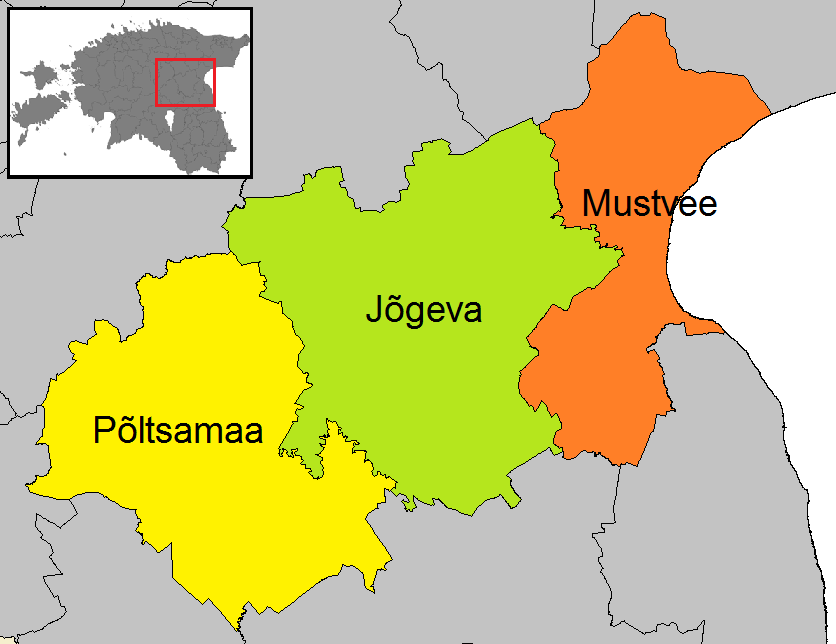|
Kullavere River
Kullavere River (also ''Omedu River'') is a river in Estonia in Jõgeva and Tartu County. The river is 59.1 km long and basin size is 629.3 km2. It runs into Peipus Lake. References Rivers of Estonia Jõgeva County Tartu County {{Estonia-river-stub ... [...More Info...] [...Related Items...] OR: [Wikipedia] [Google] [Baidu] |
Peipus Lake
Lake Peipus ( et, Peipsi-Pihkva järv; russian: Чудско-Псковское озеро, Псковско-Чудское озеро, Chudsko-Pskovskoye ozero, Pskovsko-Chudskoye ozero); is the largest trans-boundary lake in Europe, lying on the border between Estonia and Russia. The lake is the fifth-largest in Europe after Lake Ladoga and Lake Onega (in Russia north of Saint Petersburg), Lake Vänern (in Sweden), and Lake Saimaa (in Finland). The lake is a remnant of water regularly collecting at the foot of large, perennial arctic ice sheets during recent ice ages. It covers , and has an average depth of , the deepest point being .Чудско-Псковское озеро |
Estonia
Estonia, formally the Republic of Estonia, is a country by the Baltic Sea in Northern Europe. It is bordered to the north by the Gulf of Finland across from Finland, to the west by the sea across from Sweden, to the south by Latvia, and to the east by Lake Peipus and Russia. The territory of Estonia consists of the mainland, the larger islands of Saaremaa and Hiiumaa, and over 2,200 other islands and islets on the eastern coast of the Baltic Sea, covering a total area of . The capital city Tallinn and Tartu are the two largest urban areas of the country. The Estonian language is the autochthonous and the official language of Estonia; it is the first language of the majority of its population, as well as the world's second most spoken Finnic language. The land of what is now modern Estonia has been inhabited by '' Homo sapiens'' since at least 9,000 BC. The medieval indigenous population of Estonia was one of the last "pagan" civilisations in Europe to adop ... [...More Info...] [...Related Items...] OR: [Wikipedia] [Google] [Baidu] |
Jõgeva County
Jõgeva County ( et, Jõgeva maakond or ''Jõgevamaa'') is one of 15 counties of Estonia. It is situated in eastern part of the country and borders Ida-Viru County to the north-east, Lake Peipus to the east, Tartu County to the south, Viljandi County to the south-west, Järva County to the north-west and Lääne-Viru County to the north. History Jõgeva County or Jõgevamaa was created January 1, 1990 from a parts of Viljandimaa and Tartumaa counties. County government The County government (Estonian: ''Maavalitsus'') was led by a governor (Estonian: ''maavanem''), who was appointed by the Government of Estonia for a term of five years. Since 2009 until 2018, the Jõgeva County governor position was held by Viktor Svjatõšev. From 01.01.2018 County governments were shut down in Estonia. Municipalities The county is subdivided into municipalities. There are three rural municipalities (Estonian: ''vallad'' – parishes) in Jõgeva County. See also * Vooremaa * Vooremaa ... [...More Info...] [...Related Items...] OR: [Wikipedia] [Google] [Baidu] |
Tartu County
Tartu County ( et, Tartu maakond or ''Tartumaa'') is one of 15 counties of Estonia. It is located in eastern Estonia bordering Põlva County, Valga County, Viljandi County and Jõgeva County. The area of Tartu County is , which covers 6.9% of the territory of Estonia. In January 2013 Tartu County had a population of 150,139 – constituting 11.6% of the total population in Estonia. The city of Tartu is the centre of the county located at a distance of from Tallinn. Tartu County is divided into 8 local governments – 1 urban and 7 rural municipalities. Geography Tartu County lies in South Estonia, between Lake Võrtsjärv and Lake Peipsi. Estonia's only navigable river, River Emajõgi (100 km long), flows through the county, connecting Lake Peipsi and Lake Võrtsjärv. Wavy plains are typical landscapes of Tartu County. One third of the county is covered with forests, a third is cultivated. A quarter is made up of wetlands at the headwaters and lower course of the Em ... [...More Info...] [...Related Items...] OR: [Wikipedia] [Google] [Baidu] |
Rivers Of Estonia ...
Rivers of Estonia are short and mostly have small discharge. Only 10 rivers are longer than 100 km. The largest river is Narva (length 77 km) on the Estonian–Russian border, whose average discharge is larger than that of all other rivers combined. Longest rivers List of rivers ''List is incomplete.'' ReferencesEstonica: The hydrographic network* {{List of rivers of Europe Estonia Rivers A river is a natural flowing watercourse, usually freshwater, flowing towards an ocean, sea, lake or another river. In some cases, a river flows into the ground and becomes dry at the end of its course without reaching another body of wat ... [...More Info...] [...Related Items...] OR: [Wikipedia] [Google] [Baidu] |


.jpg)
